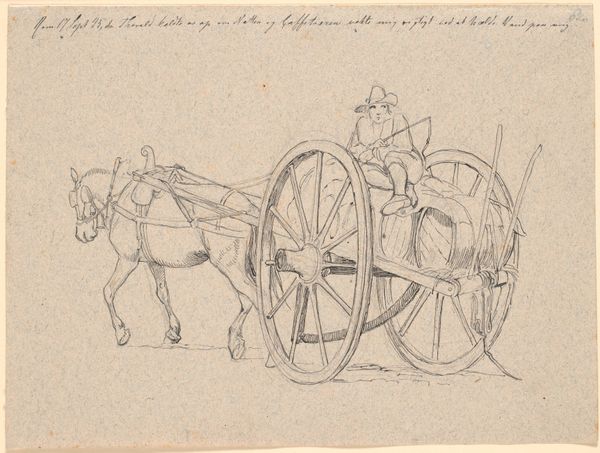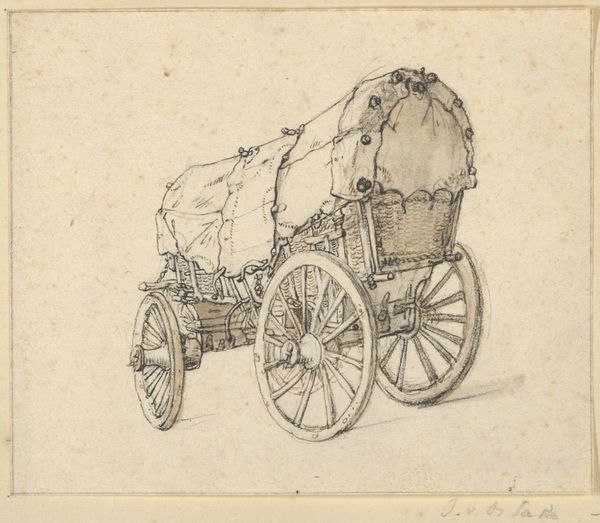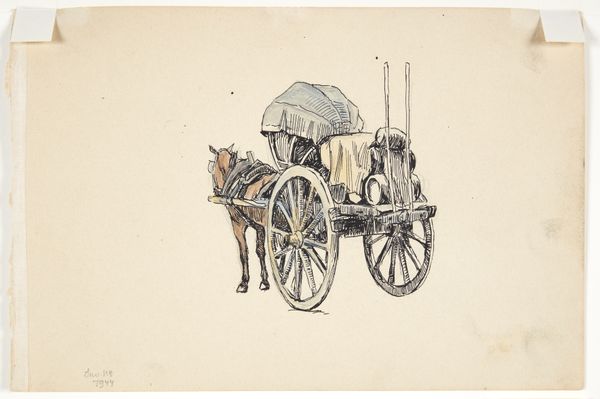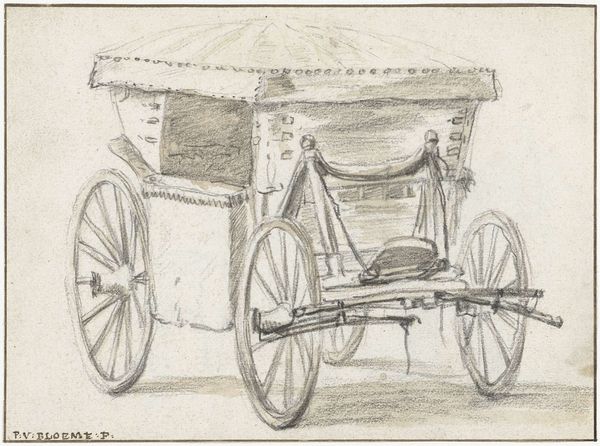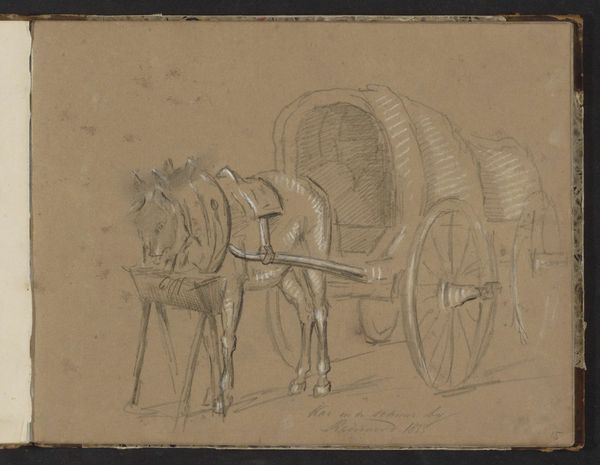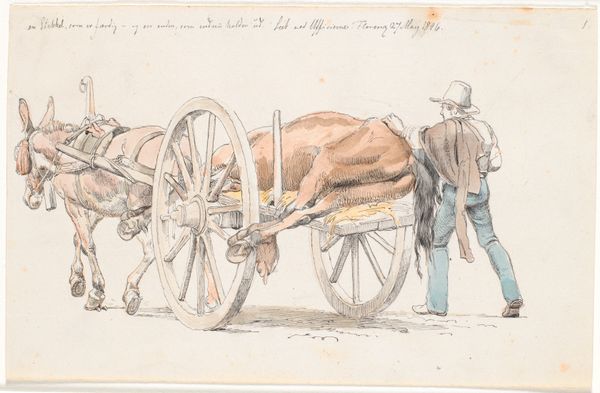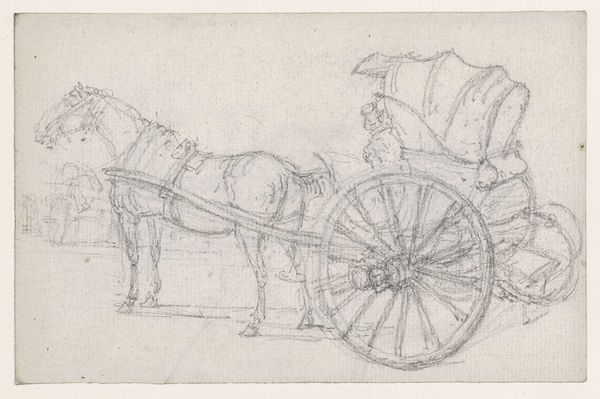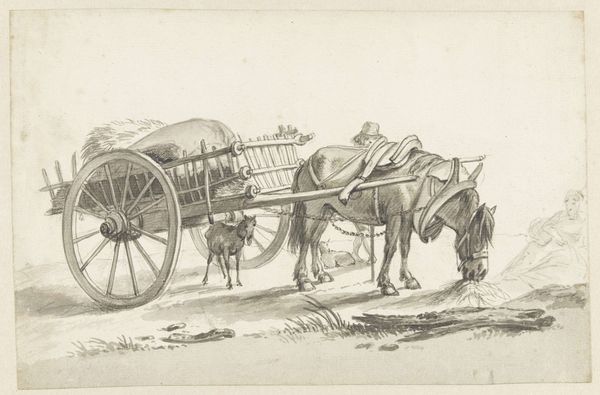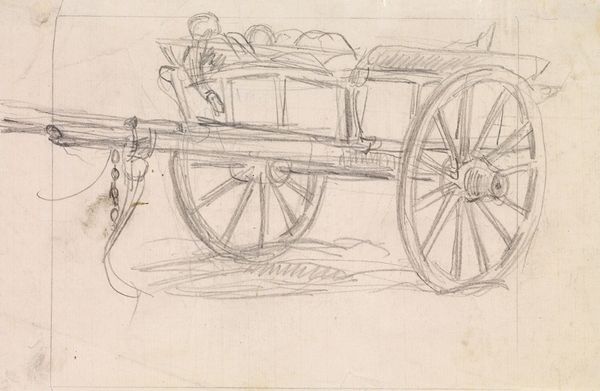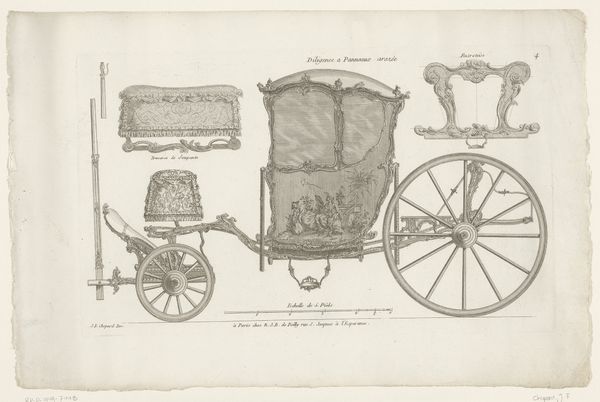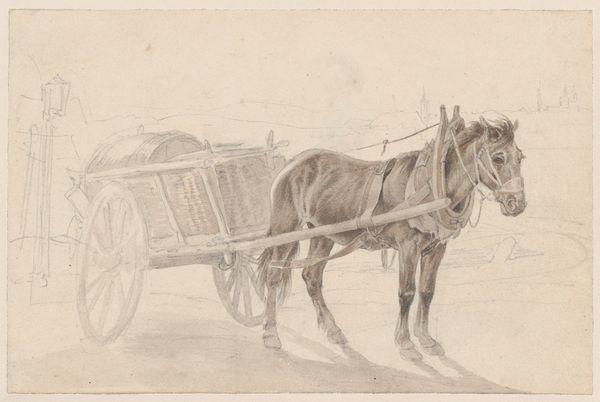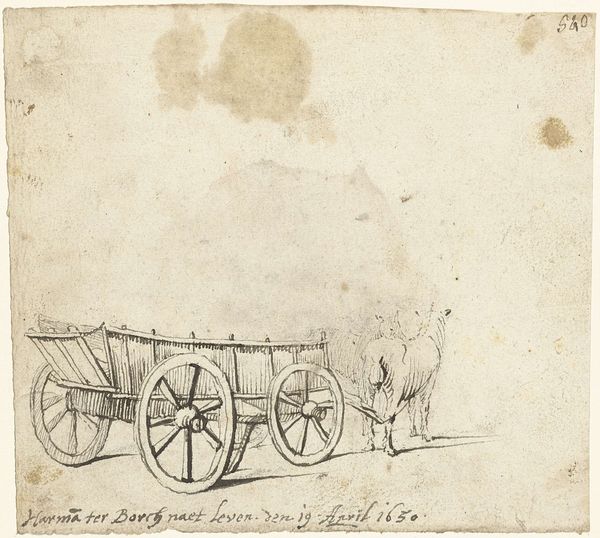
drawing, watercolor
#
drawing
#
landscape
#
watercolor
#
romanticism
#
genre-painting
Dimensions: 204 mm (height) x 274 mm (width) (bladmaal)
Editor: A somewhat melancholic scene, wouldn't you say? A quiet observation of the everyday. Curator: Well, let's have a closer look at this work entitled, "En hønsekræmmers vogn," or "A Chicken Peddler's Cart." It's a drawing, mostly in pencil and watercolor, created by Johan Thomas Lundbye in 1845. What is especially intriguing, and adds to the context is where this work was produced, which the artist noted: Rome. Editor: Rome, you say? Odd. Yes, looking closer, I see, past the quite rudimentary rendering, these poor fowl packed tight into their wire cage. It speaks volumes about commerce, of course. Were the cages really constructed of wires? It's funny, they almost look happy—peeking through at us. But that cart… I am just struck by a pervasive feeling of weariness. Curator: Yes, but consider the Romantic period ideals. Lundbye was keen to document everyday life during his travels. What are your first thoughts as to the institutional reception of such work from that period? Editor: That is an interesting element; that the everyday genre scene has been selected for preservation as something representative of Rome and it's environs. The seeming sadness might just be realism. It reminds one of the slow pace of life… I see so many little details which ring as quite real to this scene; even the texture of the draped textiles of the merchant's cart appear rough and soiled, somehow. I am surprised that something so raw could be produced through watercolor. Curator: Absolutely, and it emphasizes the social role of such a scene. Here we see labor depicted perhaps without the high theatrical tone common at the time, or the grand allegory often presented by works on historical scenes or legends, but by viewing what seems, to me at least, quite down to earth! The artist isn't elevating the poor merchant; Lundbye merely records a glimpse into everyday labor. What did you mean before by its melancholic effect? Editor: Just look at those dejected donkeys barely sketched in leading the way, and their slouching heads; they really strike me with empathy, but that's how art gets you! They bring this quiet humility and peace into focus, at least from my perspective, even if you don't think it represents grand-scale cultural drama. And the whole picture uses so many neutral colors; it's an aesthetic tone poem on rustic and basic things. Curator: Well put! The simplicity underscores an important focus and the conditions that such an industry entails in this moment. Lundbye wasn't necessarily moralizing in either case but offered a critical lens for considering labor. Editor: Agreed! This image makes one question, at least, the status and perspective afforded toward manual labor in this moment. Curator: A wonderful, reflective encounter if I do say so myself!
Comments
No comments
Be the first to comment and join the conversation on the ultimate creative platform.
